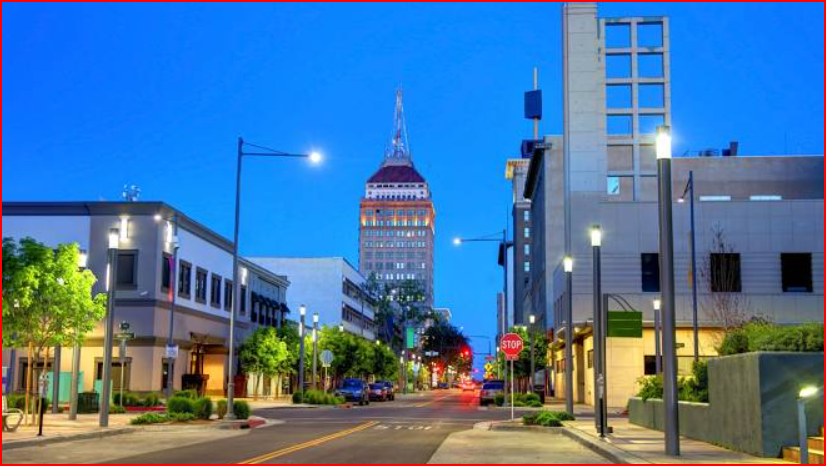Yes, it is generally safe to travel to India. Exercise caution and follow local guidelines for a smooth experience.
India offers a rich cultural heritage, diverse landscapes, and vibrant cities. Tourists can explore iconic landmarks like the Taj Mahal, Jaipur’s palaces, and Kerala’s backwaters. While traveling, it’s important to stay informed about local safety advisories and health precautions. Urban areas like Delhi and Mumbai have modern amenities but can be crowded.
Rural regions provide a glimpse into traditional Indian life. Always keep your belongings secure and be mindful of your surroundings. Reliable transportation options and accommodation facilities make travel convenient. Enjoy India’s culinary delights, historical sites, and unique traditions. With proper planning, a trip to India can be both safe and memorable.

Credit: www.cabinzero.com
Current Safety Landscape In India
India is a vibrant country with a rich culture and history. Many travelers wonder about its safety. Understanding the current safety landscape is crucial for planning a trip.
Recent Travel Advisories
Travel advisories can help you stay informed. Here is a summary of recent updates:
| Country | Advisory Level | Details |
|---|---|---|
| USA | Level 2 | Exercise increased caution |
| UK | General Advice | Follow local updates |
| Australia | Level 2 | Be aware of your surroundings |
Check travel advisories for the latest updates before your trip.
Local Perspectives
Locals offer valuable insights about safety. Talking to residents can help you understand the real situation. Here are some common tips from locals:
- Avoid isolated areas at night.
- Use trusted transportation options.
- Respect local customs and traditions.
- Keep your belongings secure.
Engage with locals to get the best advice for a safe trip.
Stay aware and use common sense to enjoy your visit to India.
Health Concerns For Travelers
Traveling to India can be an enriching experience, but it’s important to be aware of health concerns. Knowing the latest health information can help ensure a safe and enjoyable trip.
Covid-19 Updates
The COVID-19 situation in India changes frequently. Stay updated with the latest travel advisories and COVID-19 guidelines from reliable sources like the World Health Organization and Centers for Disease Control and Prevention.
Keep these points in mind:
- Wear a mask in crowded places
- Maintain social distancing
- Wash hands frequently with soap and water
- Use hand sanitizer with at least 60% alcohol
Check if you need to show a negative COVID-19 test before entry. Some states in India may have their own rules.
Vaccinations And Precautions
Before traveling to India, ensure you are up-to-date with standard vaccinations. Consult your healthcare provider for personalized advice.
Essential Vaccinations:
- Hepatitis A and B
- Typhoid
- Tetanus
- Measles, Mumps, and Rubella (MMR)
Additional Precautions:
- Consider vaccinations for Japanese Encephalitis and Rabies if you will be in rural areas.
- Avoid drinking tap water; opt for bottled water instead.
- Be cautious of street food; eat at reputable places.
Carry a travel health kit that includes basic medicines and first aid supplies. This is especially helpful in remote areas.
| Health Concern | Precaution |
|---|---|
| Malaria | Use mosquito repellent and sleep under a mosquito net. |
| Dengue Fever | Wear long sleeves and pants to protect against mosquito bites. |
| Traveler’s Diarrhea | Drink bottled water and eat well-cooked food. |
Navigating Cultural Norms And Etiquette
Traveling to India can be an unforgettable experience. The country’s rich history, diverse culture, and warm hospitality are captivating. However, understanding and respecting cultural norms and etiquette is essential. This helps ensure a safe and pleasant trip. Below, we explore important aspects of navigating these norms.
Dress Code
In India, the dress code is more conservative than in many Western countries. Wearing modest clothing is a sign of respect. For men, this typically means wearing long pants and shirts. Women should opt for clothing that covers their shoulders and knees.
- Avoid wearing shorts and tank tops in public places.
- Consider bringing a scarf or shawl to cover your head when visiting religious sites.
- Loose-fitting clothes are not only respectful but also comfortable in the heat.
Understanding the dress code can help you blend in and avoid unwanted attention. This simple act of respect can go a long way in making your travel experience smoother.
Social Behaviors
Social behaviors in India may differ from what you’re accustomed to. Greeting people with a namaste (palms pressed together) is common and appreciated. Physical contact, especially between opposite genders, is generally avoided in public.
| Do | Don’t |
|---|---|
| Use your right hand for eating and giving items. | Touch someone’s head or feet. |
| Remove shoes before entering someone’s home. | Point your feet at people or religious objects. |
Respecting these social norms can help you build positive interactions. It shows you value the local customs and traditions.
By understanding the cultural norms and etiquette in India, you can have a more enjoyable and respectful travel experience. This not only benefits you but also the people you interact with during your journey.
Essential Safety Tips For Tourists
India is a beautiful and diverse country. It offers rich culture, history, and landscapes. But, like any travel destination, safety is essential. Here are some tips to help you stay safe during your visit.
Staying Safe In Crowded Places
Crowded places are common in India. They are full of life but need caution. Here are some tips:
- Keep your belongings close: Use a money belt or a secure bag.
- Avoid displaying valuables: Keep jewelry and gadgets hidden.
- Stay aware of your surroundings: Be mindful of people around you.
- Stick to well-lit areas: Especially at night, stay in places with good lighting.
- Use trusted transportation: Opt for pre-booked cabs or known services.
Dealing With Scams
Scams can be a concern for tourists. Knowing what to expect can help you avoid them. Here are some common scams and tips:
| Type of Scam | How to Avoid |
|---|---|
| Fake Guides | Use official guides or get recommendations from your hotel. |
| Overpriced Goods | Negotiate prices and compare with other shops. |
| Taxi Overcharging | Insist on using the meter or agree on a price before the ride. |
Being aware and prepared can make your trip enjoyable. Stay safe and enjoy the vibrant culture and beauty of India!
Best Times And Places To Visit
India is a vibrant and diverse country, rich in culture, history, and natural beauty. This vast nation offers something for every traveler. Knowing the best times and places to visit can enhance your travel experience. Let’s explore the ideal times and safe regions to visit India.
Weather Considerations
Understanding the weather is crucial for planning your trip. India experiences three main seasons: summer, monsoon, and winter.
| Season | Months | Weather |
|---|---|---|
| Summer | March – June | Hot and dry |
| Monsoon | July – September | Heavy rain |
| Winter | October – February | Cool and pleasant |
Winter is the best time to visit most parts of India. The weather is cool and pleasant. This makes it perfect for sightseeing and outdoor activities.
Regions With Lower Risks
Some regions in India are considered safer for tourists. These areas have lower crime rates and are more tourist-friendly.
- Goa: Known for its beautiful beaches and relaxed atmosphere.
- Kerala: Famous for its backwaters, Ayurvedic treatments, and scenic beauty.
- Rajasthan: Home to majestic palaces, forts, and rich cultural heritage.
- Himachal Pradesh: Offers stunning landscapes, hill stations, and trekking opportunities.
These regions are popular among tourists and have good infrastructure. This includes accommodation, transportation, and safety measures.
Always stay informed about local safety guidelines. Consult travel advisories before planning your trip. Being aware of the best times and places to visit ensures a memorable and safe journey.

Credit: www.bhtp.com
Transportation: Getting Around Safely
Traveling in India can be an adventure. It’s important to know how to get around safely. From taxis to trains, there are many ways to travel. Here are some tips for safe transportation in India.
Choosing Reliable Taxi Services
Always choose trusted taxi services. Apps like Uber and Ola are popular and reliable. These services offer GPS tracking and driver information.
- Check the driver’s rating.
- Share your trip details with a friend.
- Avoid hailing taxis from the street at night.
Booking through apps can ensure a safer journey. It’s a good idea to keep the emergency contact feature handy.
Train Travel Tips
India’s trains are famous for their reach and affordability. Follow these tips for a safe train journey:
- Book tickets in advance through the official IRCTC website.
- Choose AC compartments for added security.
- Keep your belongings close and use locks for luggage.
- Avoid sharing personal details with strangers.
Train stations can be crowded. Stay alert and aware of your surroundings. Traveling during the day is usually safer.
By following these tips, you can enjoy a safe and pleasant journey in India. Whether you choose taxis or trains, being prepared can make all the difference.
Real Stories From Recent Visitors
Traveling to India offers a mix of vibrant culture, stunning landscapes, and diverse experiences. Recent visitors have shared their stories, shedding light on what to expect. Let’s dive into their positive experiences and challenges faced during their journeys.
Positive Experiences
Visitors often rave about India’s rich cultural heritage. Many travelers are amazed by the beauty of the Taj Mahal. The historic site leaves a lasting impression.
Food lovers find Indian cuisine delightful. From street food to fine dining, the flavors are unique and unforgettable.
The hospitality of Indian people is frequently highlighted. Travelers appreciate the warm and welcoming nature of locals.
Natural landscapes captivate many visitors. From the Himalayas in the north to the beaches in the south, India’s scenery is diverse and breathtaking.
Challenges Faced
While many experiences are positive, some travelers encounter challenges. Navigating through crowded cities like Delhi and Mumbai can be overwhelming. The sheer number of people can be a shock.
Language barriers sometimes pose a problem. English is widely spoken, but regional languages can create confusion.
Health concerns are another challenge. Visitors must be cautious about food and water to avoid illness.
Safety can be a concern in certain areas. It’s important to stay informed and take necessary precautions.
Below is a table summarizing the common experiences shared by recent visitors:
| Aspect | Positive | Negative |
|---|---|---|
| Culture | Rich heritage | Overwhelming at times |
| Food | Delicious and diverse | Health concerns |
| People | Warm and welcoming | Language barriers |
| Landscapes | Stunning and varied | Safety in remote areas |

Credit: www.whoatravel.com
Frequently Asked Questions
Is India Safe For Tourists Now?
India is generally safe for tourists now. Exercise caution, stay updated on travel advisories, and follow local guidelines.
Is It Safe For A Girl To Travel To India?
Yes, it is safe for a girl to travel to India. Follow local guidelines, stay alert, and avoid isolated areas.
Is Delhi Safe For Tourists?
Delhi can be safe for tourists with precautions. Stay in well-known areas, avoid isolated places, and use reliable transport.
How To Safely Visit India?
To safely visit India, research local customs, stay updated on travel advisories, use reputable transportation, avoid isolated areas, and drink bottled water.
Conclusion
Traveling to India can be a safe and enriching experience. Research and preparation are crucial. Follow travel advisories and local guidelines. Stay informed and cautious. Embrace the vibrant culture and diverse landscapes. With the right precautions, your journey to India will be memorable and safe.
Safe travels!


















